Prehistoric Planet: Everything you need to know about Apple TV's dinosaur epic
The greatest show on earth...66 million years ago

Apple's push to challenge the big beasts of streaming its continuing at pace.
As well as expanding its range of movies, with Argylle and Spirited, two genuine blockbusters due later in the year, and continuing to pump out high-quality drama like The Essex Serpent, Slow Horses and Severance, Apple is also pushing Apple TV Plus into new areas.
In the US, it will soon have live baseball on Friday nights, and now has its sights set on winning over families with some real big beasts. The biggest beasts to ever walk the earth in fact.
Prehistoric Planet, a five-episode run of documentaries, starts on Monday (May 23) and will go out every night for a week, with the final instalment hitting services on Friday (May 27). It’s a hugely ambitious offering that seeks to hit the same standards as the BBC’s beloved range of nature documentaries, Dynasties and Planet Earth – complete with a voiceover from Sir David Attenborough and a score from Hans Zimmer.
The series follows the structure laid down by the BBC with Planet Earth in that viewers will be taken to a different habitat in each episode, beginning with Coasts. The show will then cycle through Deserts, Freshwater, Ice Worlds and Forests, all depicted in stunning detail, 66 million years ago.
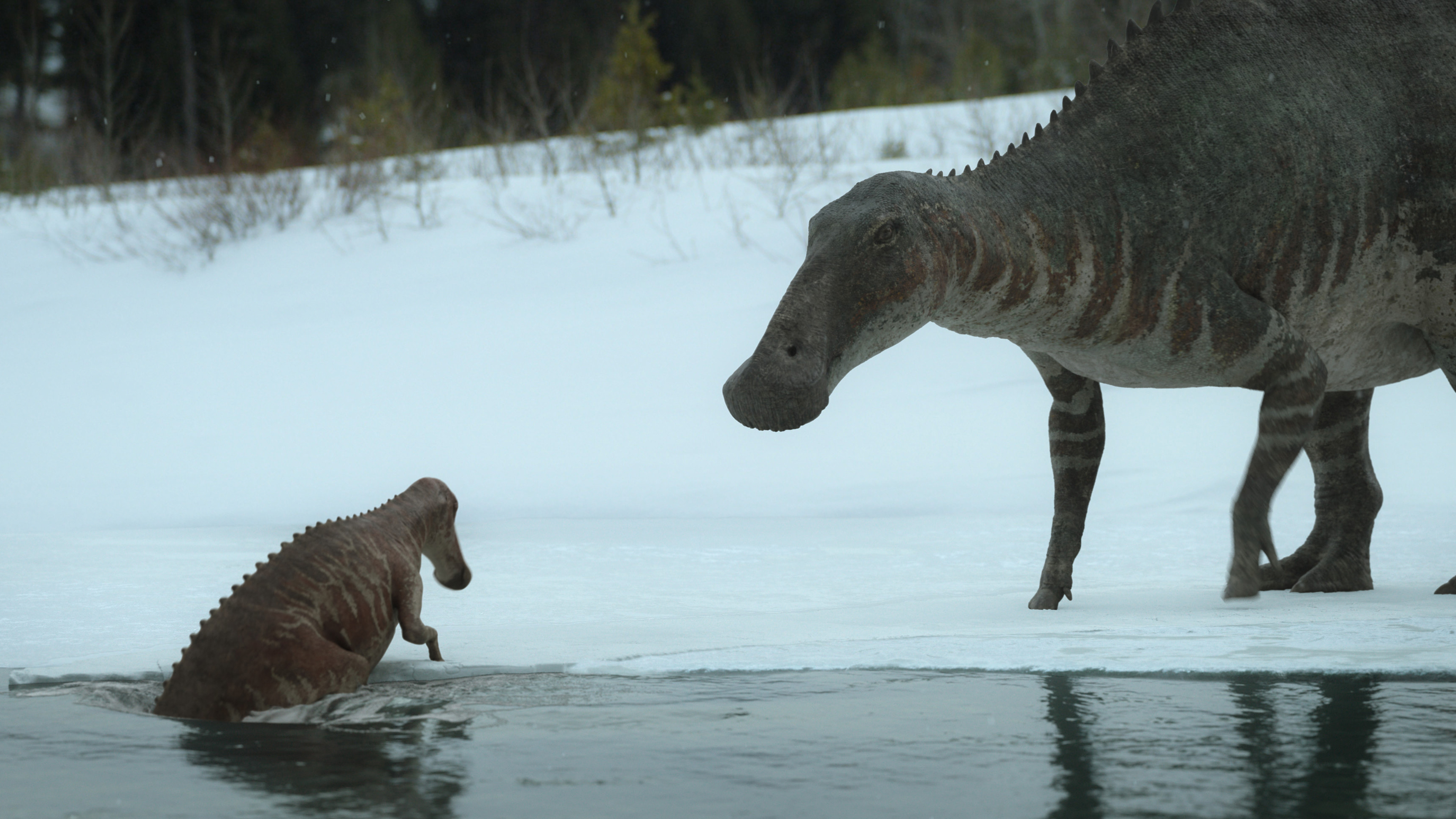
There are some breathtaking moments, including a fight between two vast mosasaurs, the giant sea-dwelling dinosaurs, as they battle to be the alpha in their pack, and a strangely touching sequence where we see two T-Rex begin a mating courtship by rubbing their faces. It turns out that the way to the heart of one of the biggest, baddest beasts the earth has ever seen is through rubbing its cheek, who knew?
That’s just a fraction of the world explored on the series, which doesn’t only take in dinosaurs, but a whole range of animals who lived at that time. Though, as you’d expect, the dinosaurs are the main attraction.
Get daily insight, inspiration and deals in your inbox
Sign up for breaking news, reviews, opinion, top tech deals, and more.
The ambition for executive producer Mike Gunton – the first Creative Director of the BBC Natural History Unit and a man whose association with Attenborough goes back to 1987 – has been long-held. He tells TechRadar: “Almost exactly 10 years ago I was stood on a mountainside with David doing the introduction to Africa, and in the opening lines David says “Nowhere on planet Earth does wildlife put on a greater show.” As he was doing that, I was thinking: has that always been true? Was there ever a time when wildlife maybe did put on a greater show? And I thought: there is! It was the time of the dinosaurs. So could you take everybody on that mountainside - all the crew, all that kit, all that expertise, and Sir David Attenborough - put them in a time machine, fly them back 66 million years ago and effectively make a wildlife series in that time. And so that was the idea. Planet Earth, 66 million years ago.”
And that’s what they’ve done. Prehistoric Planet is a vast, jaw-dropping spectacle that covers all aspects of life on Earth 66 million years ago. No expense has been spared, with the whole of the BBC Natural History Unit involved as well as a team of advisors and consultants who are the world experts on dinosaurs.
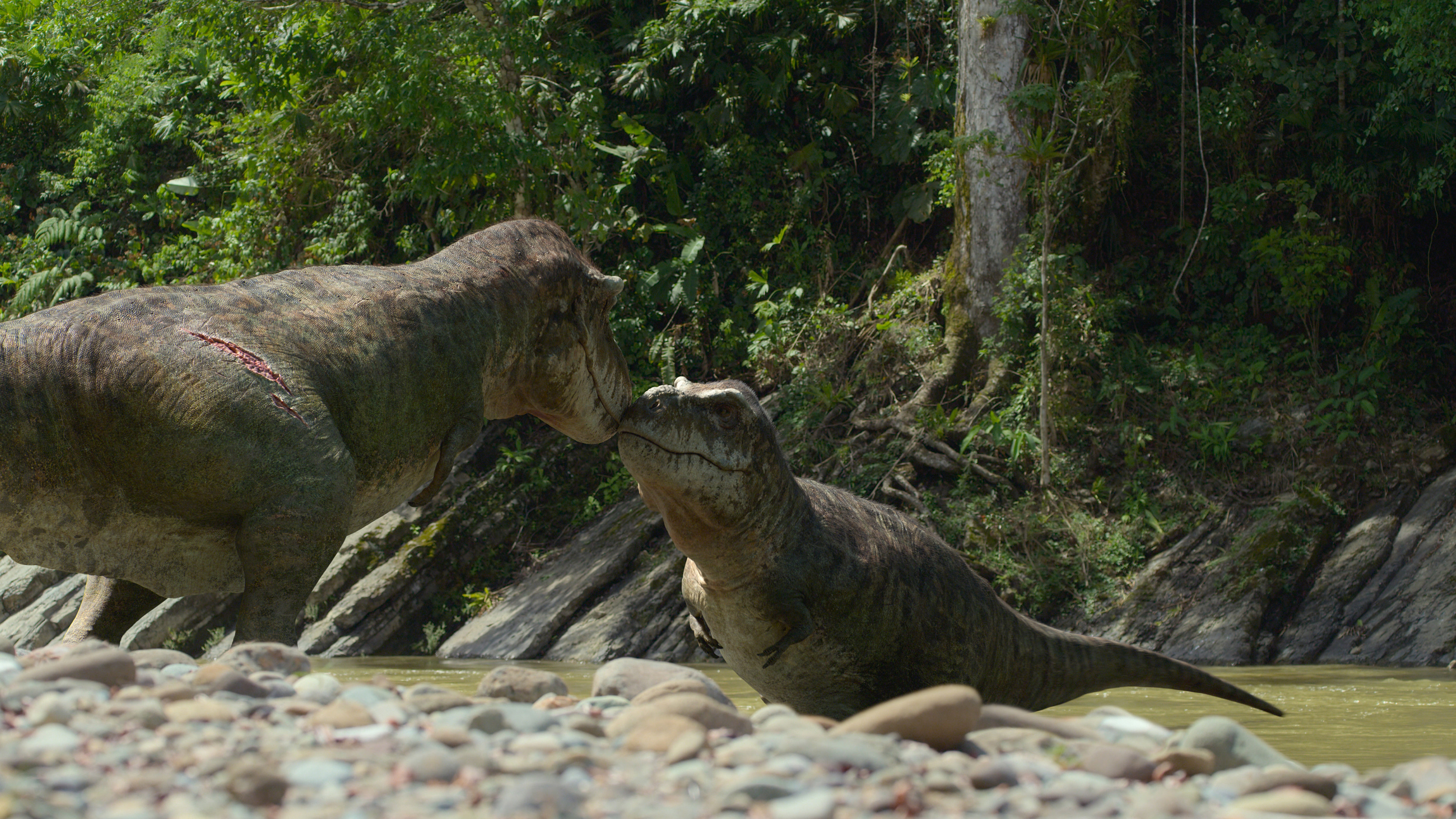
To pull this off, Gunton and Tim Walker, showrunner on Prehistoric Planet, needed serious resources, which is where Apple and its deep, deep pockets comes in. During various conversations, neither Gunton nor Walker go as far to say that this would have proved too expensive for the BBC, but they do admit that extraordinary resources were required.
“The backing from Apple was critical”, Gunton says, “I’ve spoken to lots of people about whether this might be popular and I knew you need a bold commitment, and it was the boldness of Jay Hunt (Creative Director, Worldwide Video, Europe for Apple, former Chief Creative Officer for Channel 4), to say yes. Nobody had done this before, not on this scale.”
Gunton, Walker and their team had another problem. Unlike Dynasties or Planet Earth, where the lives of nature’s greatest beasts are painstakingly documented over months of observation, dinosaurs aren’t around anymore to be documented. To bring them to life they’d need help. Enter a Hollywood heavyweight. Jon Favreau, a man with $4.3 billion in box office receipts to his name and, after his work on The Jungle Book and The Lion King, someone right at the cutting edge of CGI when it came to capturing animal behavior. Favreau is an executive producer on the series but has been a critical part of bringing the adventure to life.
Though, as Gunton says of the man in control of Disney Plus’ flagship Star Wars offerings like The Mandalorian, the whole thing began in a very low-key manner. “Jon had been talking to some of the people in Apple’s LA office and he was showing them all the CGI he’d been working on and they said, ‘There are these people in the UK who’ve got this project bubbling away, you should meet up.’ He came over to do promotion for The Lion King and we met in Jay’s office. He got out his iPad and started showing the lion behavior he was working on. Then he started recounting to me all of our shows and how he’d used it to make the film. It quickly became very clear that this was the perfect marriage of all the natural history and scientific expertise and computer-generated storytelling, with somebody who really knew how to marshall those resources. The Lion King turned out to be a lot of research and development for us.”
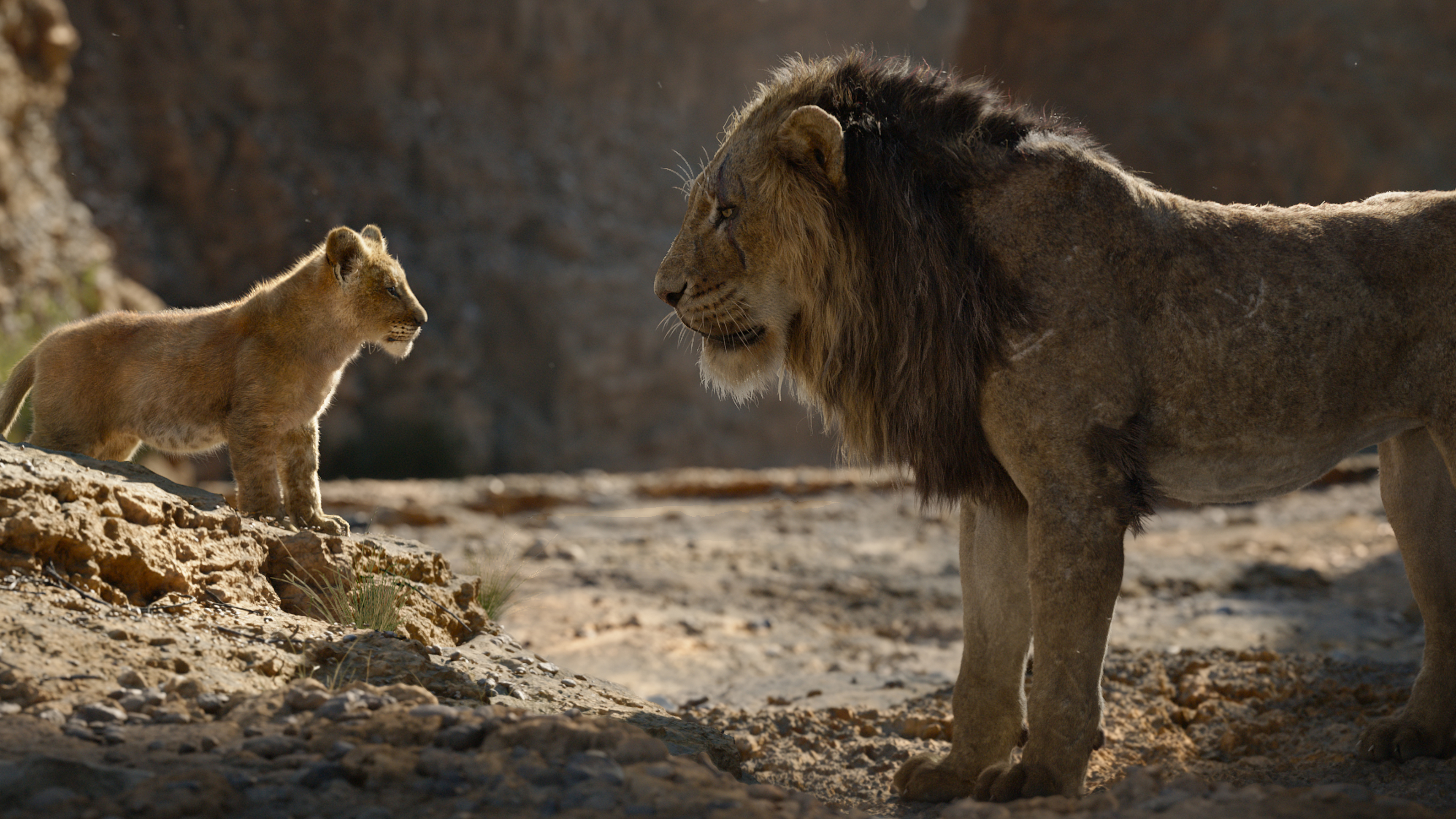
Favreau’s expertise and access to the team he’d worked with on The Lion King, most of whom were based at London VFX house MPC, proved invaluable, as Walker says, “We’ve talked a lot about taking a time machine back to the dinosaurs with Prehistoric Planet. Jon held the keys to that time machine. It gave us access to Oscar-winning animation supervisors.”
Having a hugely successful Hollywood directors on board must have loosened Apple’s purse strings that bit more too. Gunton says, “90% of what he’s brought to the project has been his creative mind and editorial control. Its been that kind of relationship with him”, but agrees, “There’s no doubt it raises its profile, having one of the most successful directors in Hollywood and the guru in CGI was only ever going to be a boon for the series.”
The production process on Prehistoric Planet has been lengthy, over three and a half years in all. A large part of that is due to the producers’ decision to use real-world backdrops with the computer-generated creatures placed in afterwards. The team was sent all over the world to capture footage, going everywhere from Iceland to Namibia to find backdrops that closely resembled the world as it was 66 million years ago.
Simple question, couldn’t that have been done on a computer screen in London? For Gunton, the limitations of a physical shoot are important to make sure the whole thing doesn’t stray away from what a wildlife documentary is: “In the CG world you can put a camera anywhere, so you have to resist the temptation to put the camera anywhere because you couldn't if you were filming it for real. You can never ask the camera person to go and stand in front of a T. rex 'cause he would eat them! That rigor - almost deliberately making it hard for ourselves – has been a really important part of this because it does reinforce and reflect what we try to do when making a wildlife film. If there’s one thing I’ve learned from doing this, you can never write as dramatic a script as Mother Nature can deliver.”
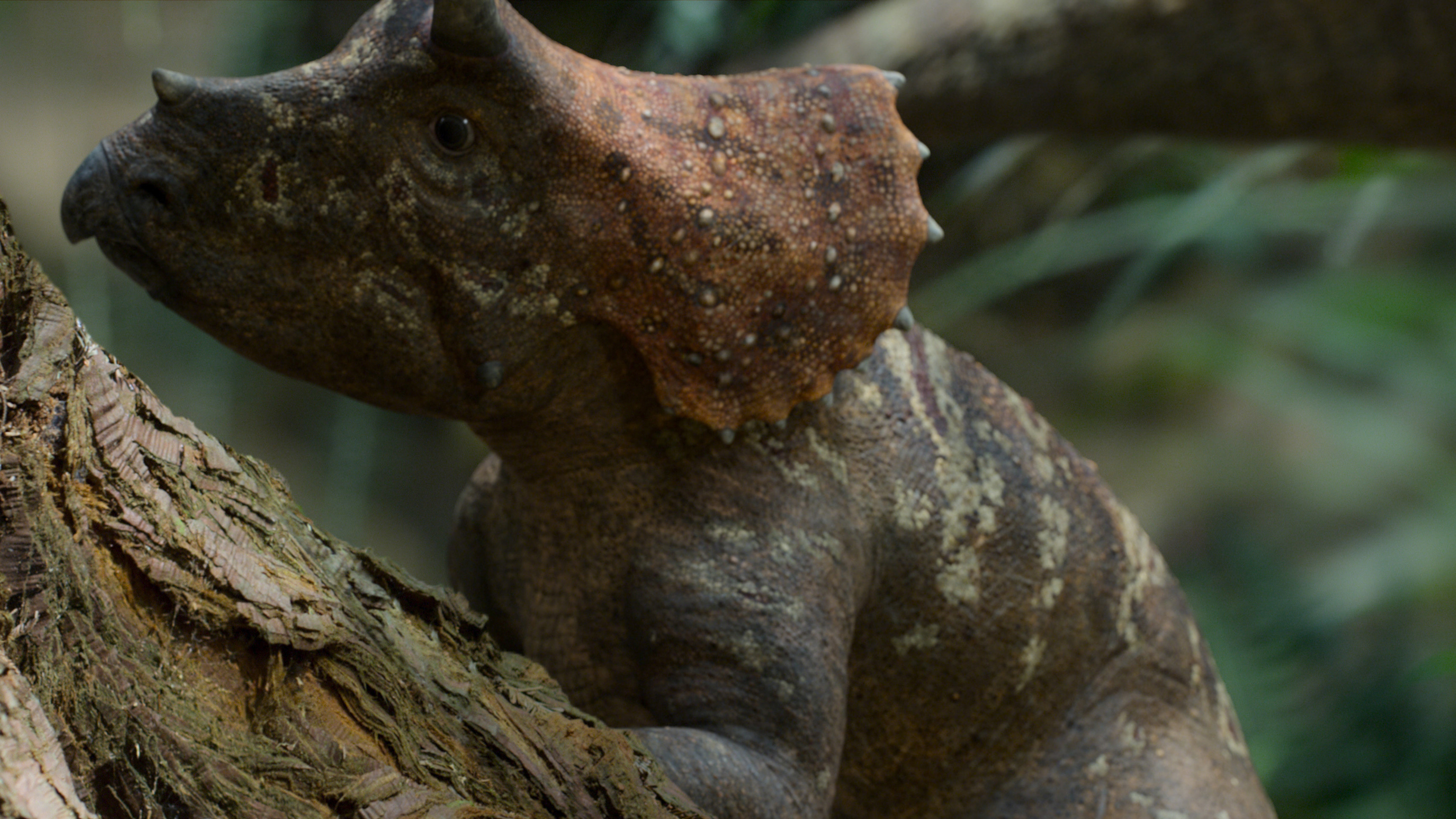
Apple’s hope, and the hope of the filmmakers, is to find a crossover hit, one that resonates throughout the world, regardless of where or how old the viewer is, a formula Gunton hit on with Planet Earth, “That’s the model” he says, “The reason that is so extraordinarily successful is that it appeals to absolutely everybody, whether you speak Serbo-Croat or Hindu, whether you’re 90 or nine, and we wanted to replicate that.”
Walker is keen to stress that while this is a show for everyone, nature’s brutality is still displayed, adding: “We don’t shy away from portraying the natural world and it is a challenging place for any animal. We show death, birth, love and what it means to be a predator.”
The pair’s association with Sir David Attenborough, the don of all documentaries, goes back a long way, but how did they persuade him to come onboard for this series, which was something of a step into the unknown?
Apparently, it was an easy sell. “I’d never seen him more enthusiastic than I have done working on this”, Walker says, “We’ve been doing his sessions over Zoom because of Covid and he’s been so full of life. He’s seen pretty much everything there is to see in the natural world and his enthusiasm for this project has been quite remarkable. Recording the voiceover, every session is spine-tingling, he’s the world's greatest storyteller.”
Gunton agrees: “He works with such intensity and he’s such a one-take man. You go back and pick up the odd thing, but he’s such a virtuoso, we work so fast. His voice is that last piece of the puzzle every time.”
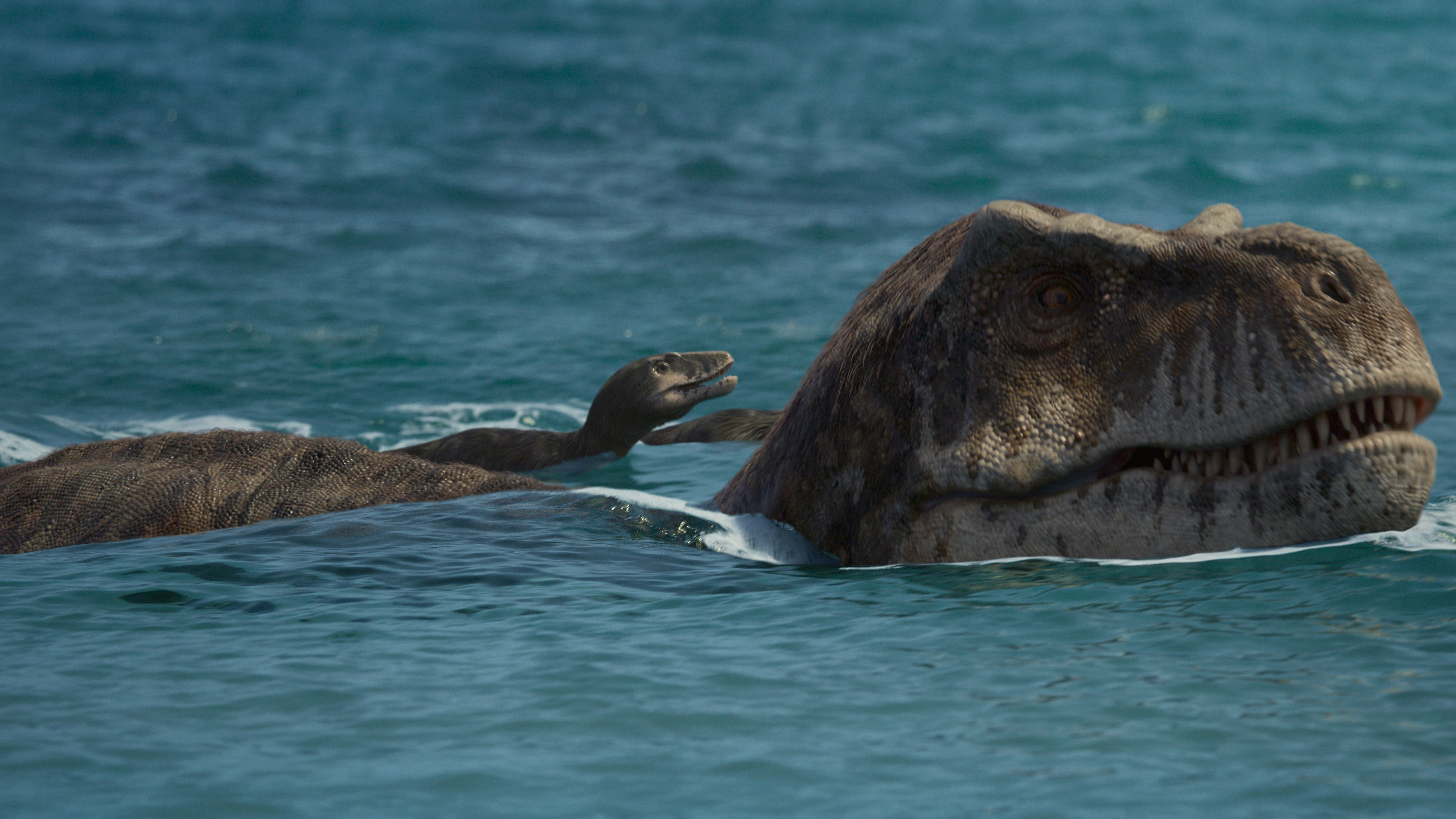
Prehistoric Planet is a big undertaking and the culmination of a huge amount of work, and it’s five-night event standing fits the bill. The question is, is it a one-off? Or is Apple in the dinosaur business for the long haul?
Both Gunton and Walker are enthusiastic about the prospect of another run, with Gunton saying: ““The diversity of dinosaurs is huge and we’ve really tried to show that. As Dr. Darren Naish (paleontologist and the show’s lead scientific consultant) says, “There’s a new dinosaur being discovered every week”. We’ve shown just a sliver. There’s 150 million years of dinosaurs stomping around and we would love to do more.”
Prehistoric Planet” will debut on Apple TV Plus globally via a five-night premiere event from May 23-27 – one episode per day.

Tom Goodwyn was formerly TechRadar's Senior Entertainment Editor. He's now a freelancer writing about TV shows, documentaries and movies across streaming services, theaters and beyond. Based in East London, he loves nothing more than spending all day in a movie theater, well, he did before he had two small children…